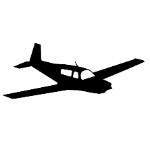Stalls and slow flight poll/discussion.
Stalls and slow flight poll.
94 members have voted
-
Members Online
- amillet
- blaine beaven
- MikeOH
- Fly Boomer
- 1980Mooney
- Mooney in Oz
- IvanP
- Andy95W
- Jackk
- philiplane
- Bartman
- Crawfish
- N201MKTurbo
- JeffPug
- McMooney
- MDMooney
- graham28105
- BrentS
- Scooter
- cliffy
- MarquezJC
- Scottknoll
- M20F
- JReniak
- DanM20C
- ProtoFly
- donkaye, MCFI
- rklems
- Ragsf15e
- AlexLev
- Canfly
- Hank
- mmcdaniel33
- JBM757
- Flyler
- M20S Driver


Recommended Posts